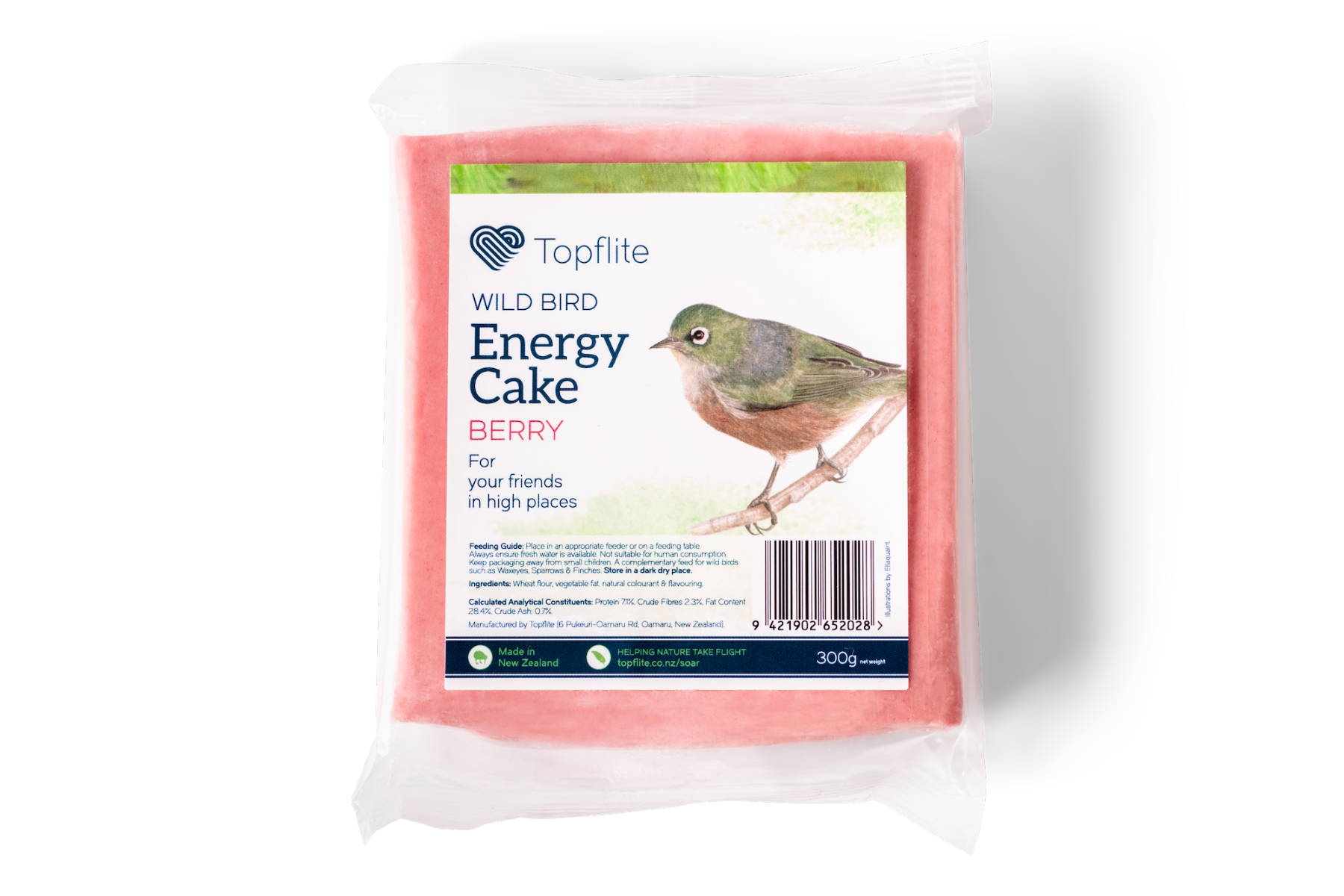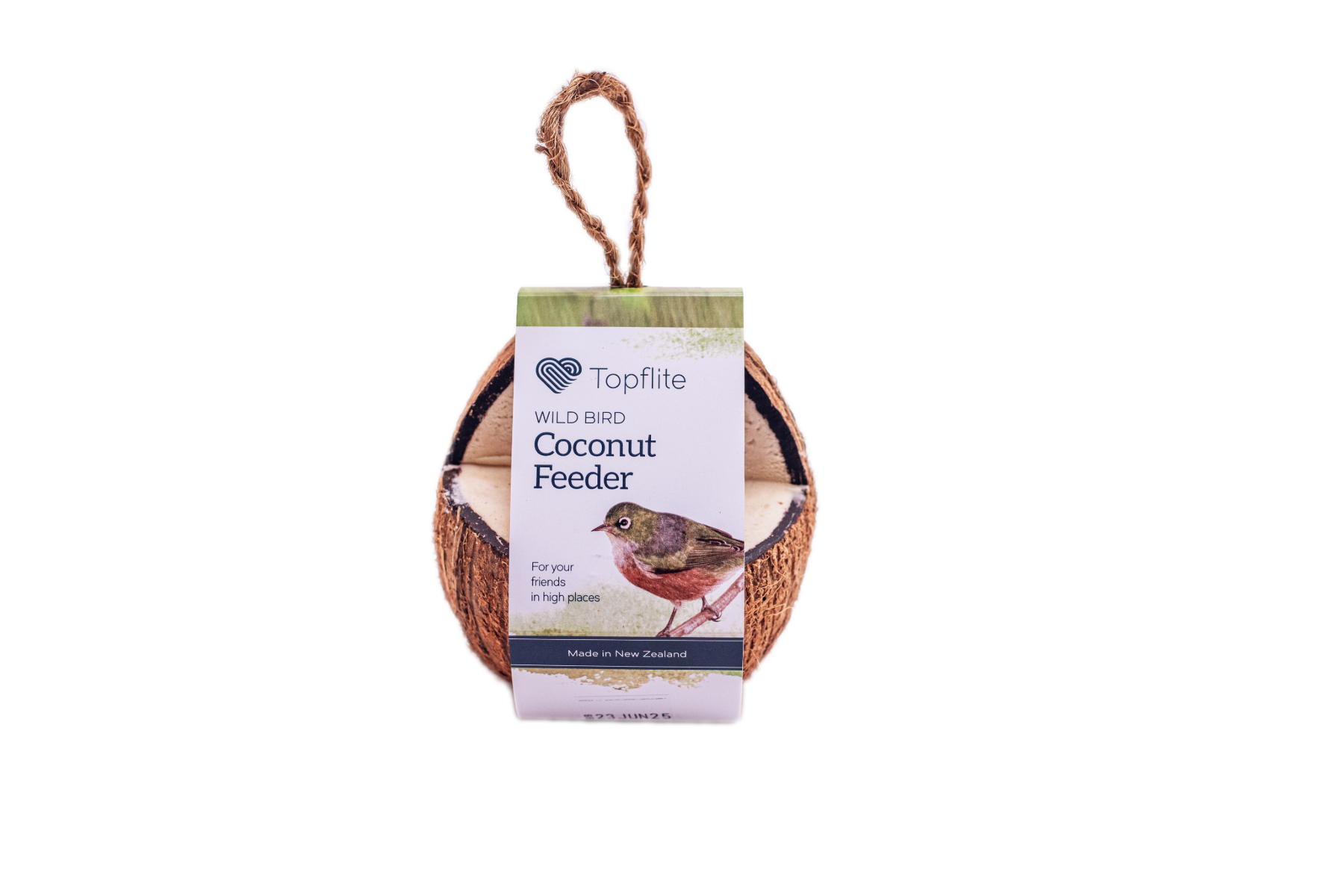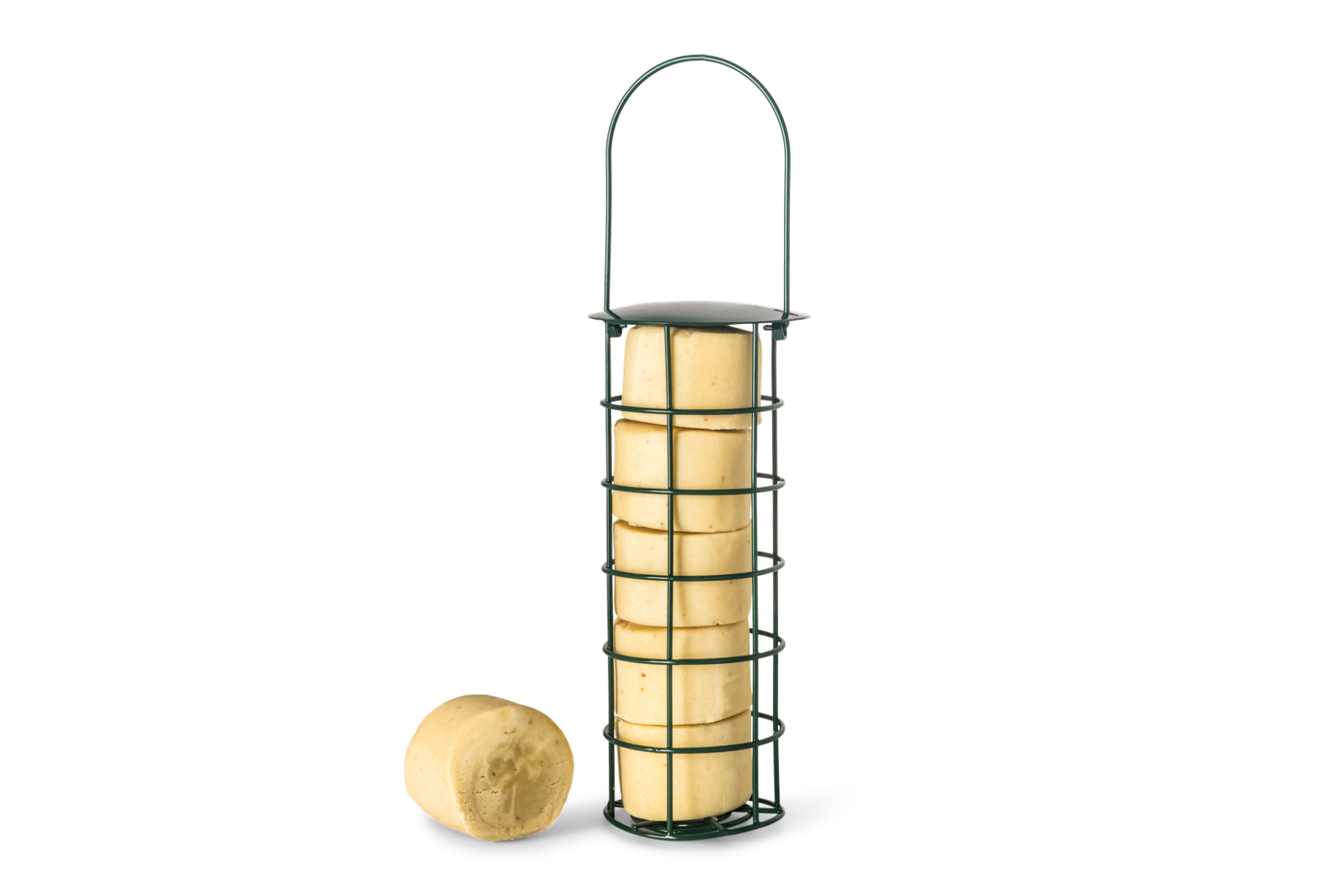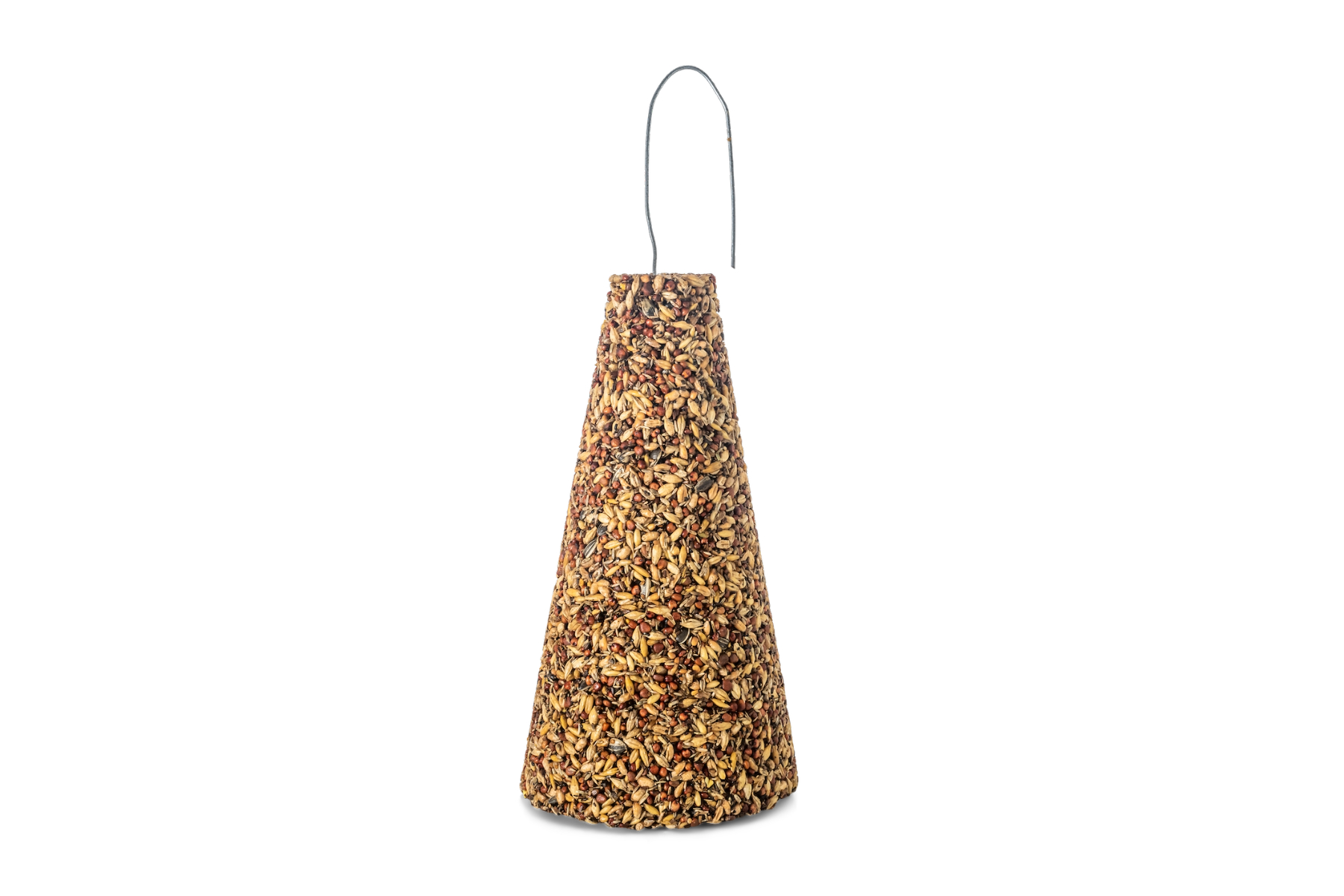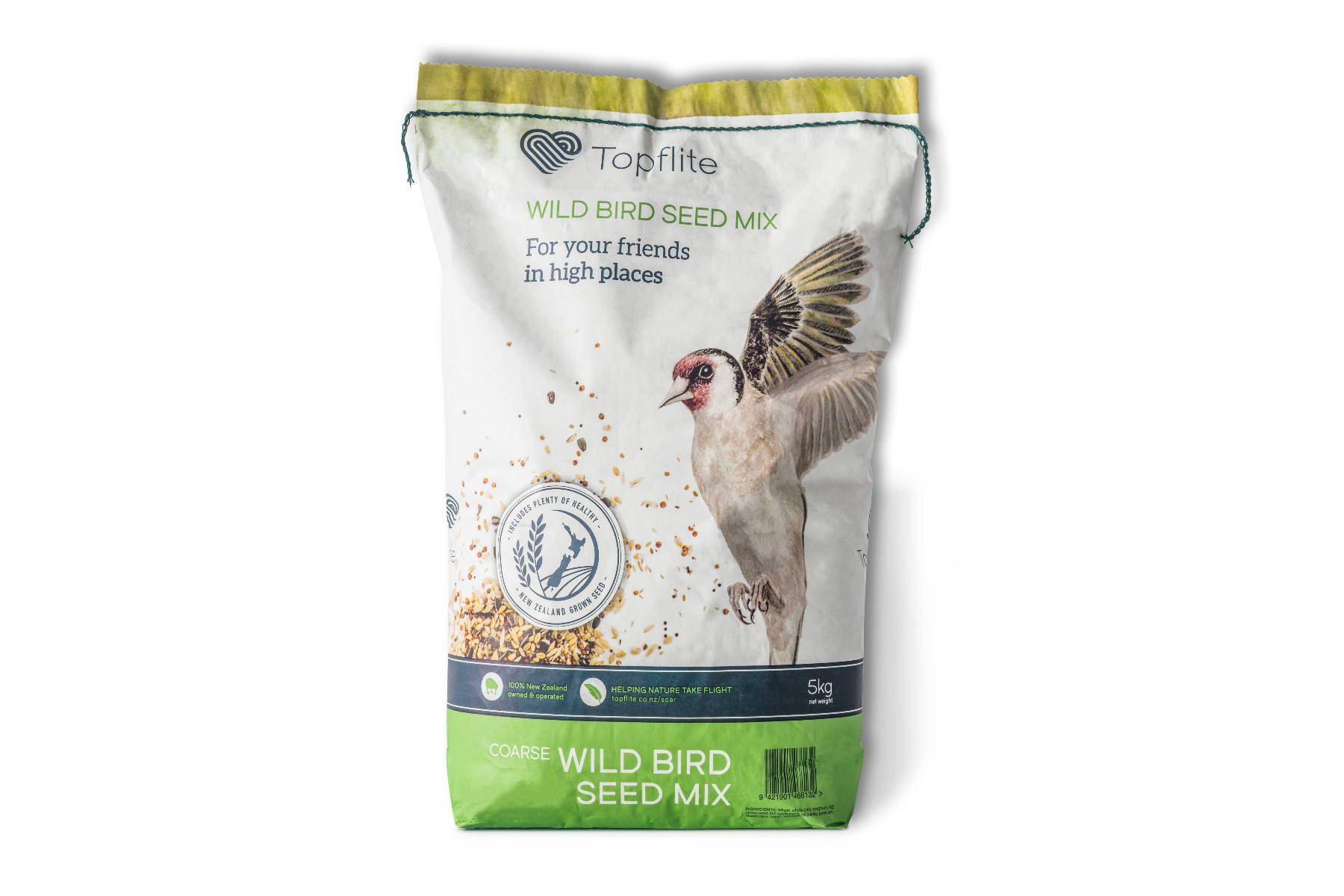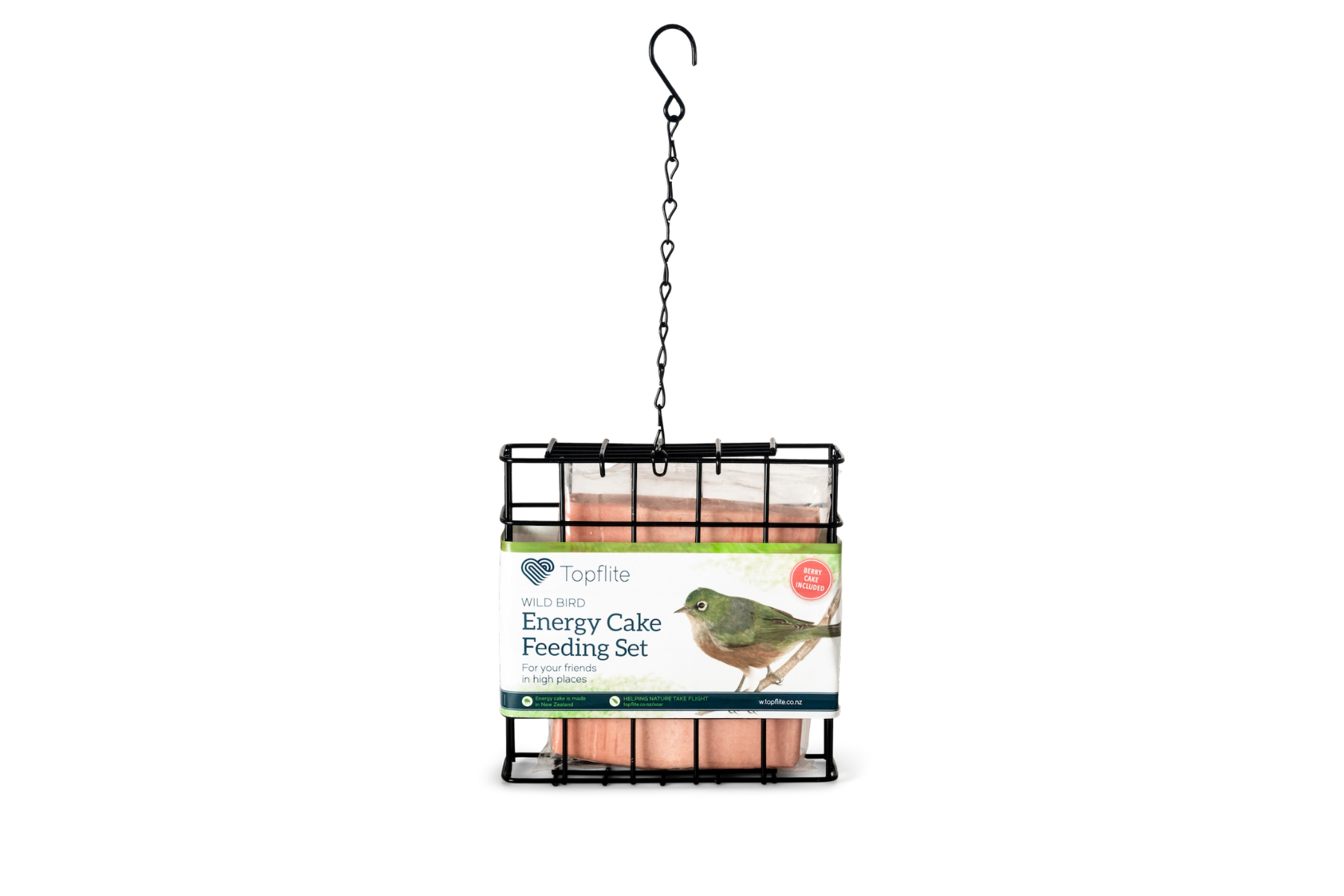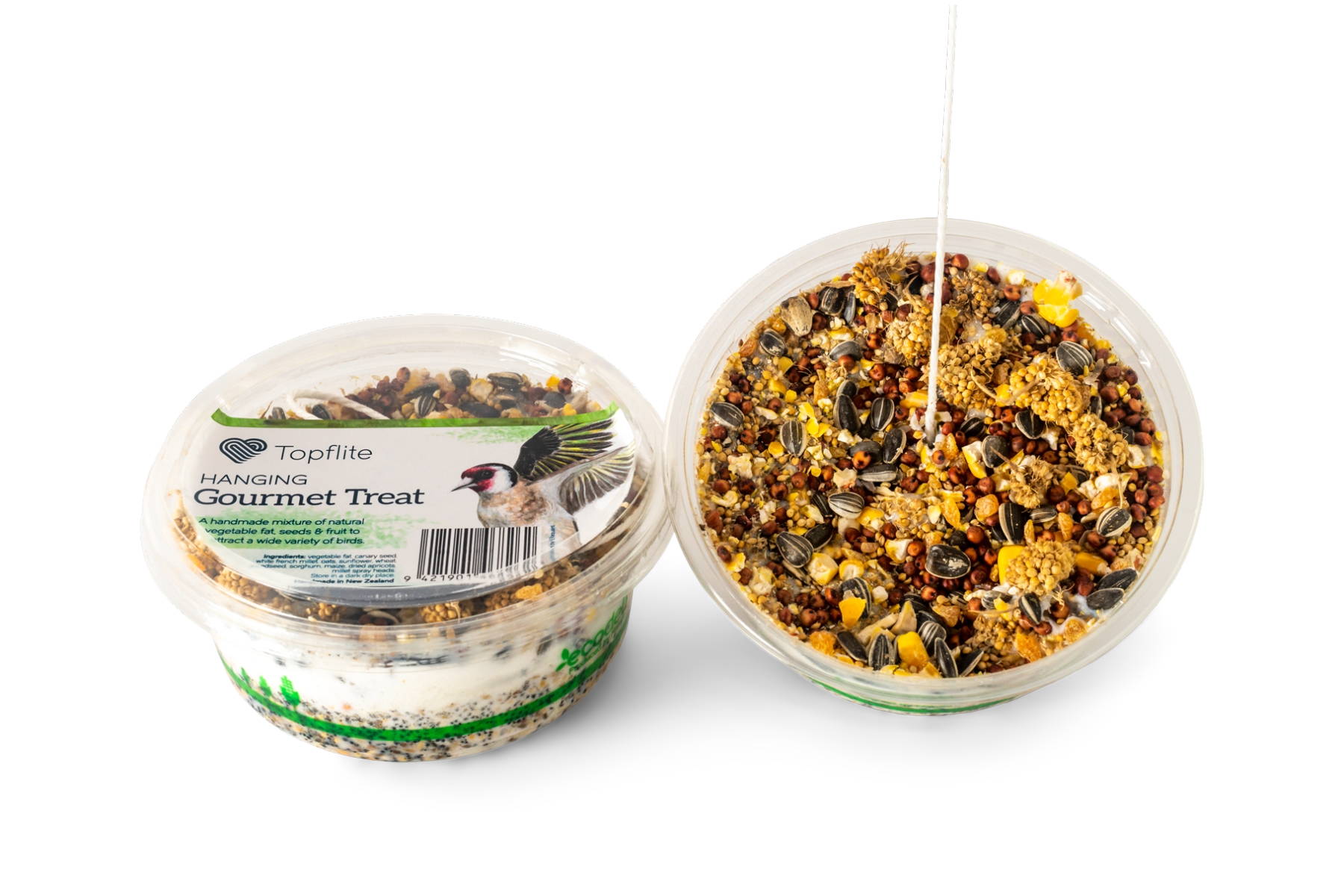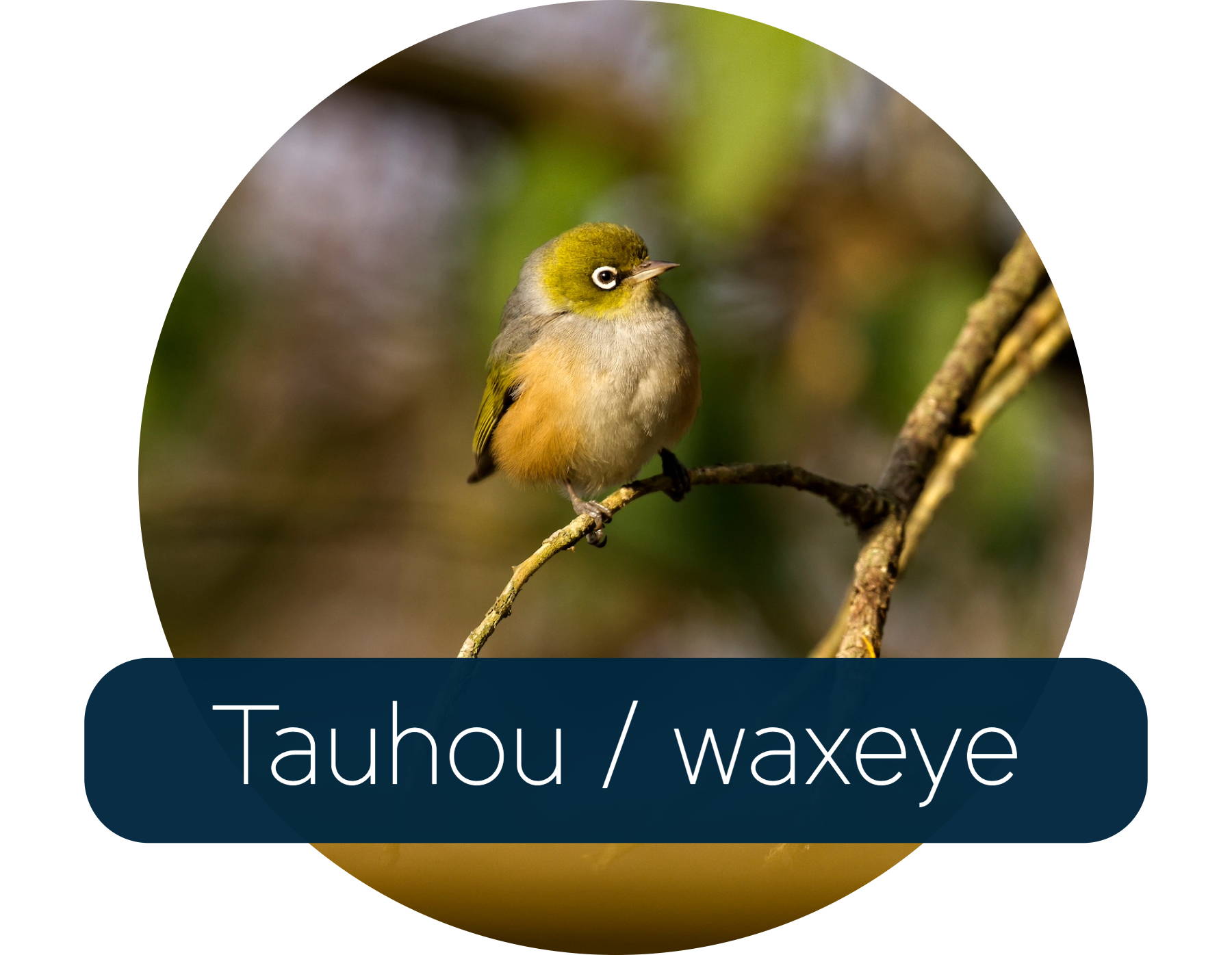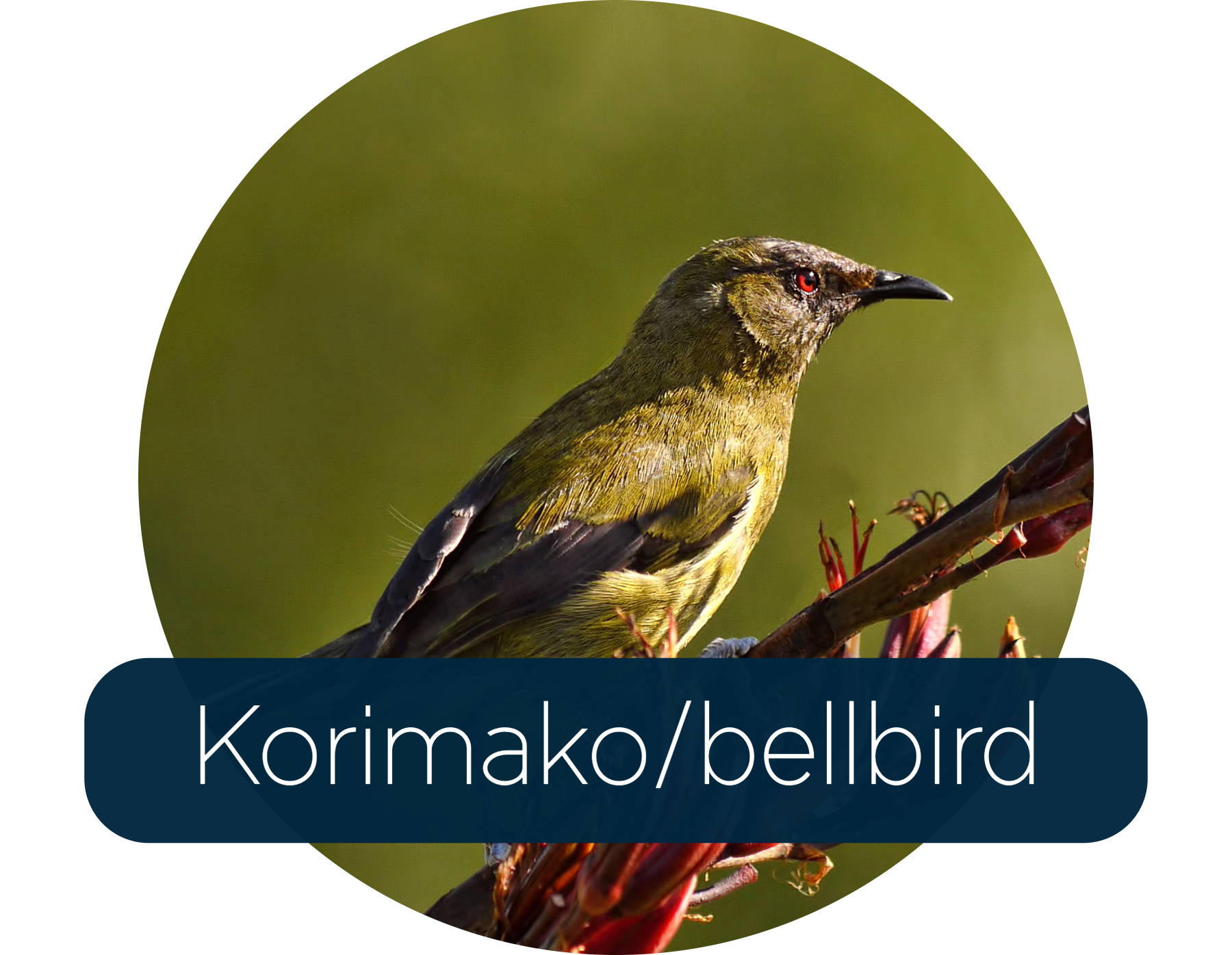Somewhere high, and dry. Always hang a bird feeder out of harm’s way. Birds feel safe feeding high up off the ground as they are out of the reach of predators like cats, rats and stoats. When hanging a bird feeder from a tree, be sure to hang the feeder out on a limb rather than close to the trunk to discourage pests.
A guide for attracting garden birds in New Zealand
Why feed wild birds?
Restoration
As our population grows, cities get denser and suitable habitats for our birds get smaller.
National bird counts show that some populations of native and introduced species are in decline, while others are increasing. By creating bird-friendly habitats in our urban spaces, parks and gardens, we can help bird populations grow throughout New Zealand.
Preservation
Birds need a little help from us, especially in winter when natural food sources are in short supply.
Most New Zealanders know by now that putting out bread is not the answer. Bread and grains are really bad for birds as it lacks the proper nutrition. Putting out clean water, good quality seed, nectar, fat-based food and fresh fruit will see birds through times of food scarcity.
Appreciation
Watching birds is one of life’s most simple yet enriching pleasures.
Amusing to look at and gorgeous to listen to, birds bring life and personality to the garden. But it’s more than just a pretty picture. Feeding birds creates a connection with nature, which humans need for a good sense of wellbeing. It also helps us to learn about bird species; their habits, food preferences and behaviour.
What food for which bird?
For native birds
New Zealand’s native birds eat a combination of nectar, fruit, foliage and insects. They don't eat seed like the introduced bird species brought to New Zealand by settlers. The best thing to do for native birds, if you can, is to plant a range of flowering and fruiting native plants as long-term food sources.
During winter and autumn, when natural food sources are scarce though, try putting out nectar, Energy Food or fresh fruit to attract native birds

A collection of berries from native NZ shrubs
For introduced species
One clue as to what a bird eats is the shape of its beak. Finches and sparrows for example, have triangular-shaped beaks, designed to crack into hard seed coats. Our premium New Zealand-grown seeds are high in energy and rich in essential nutrients, providing a boost when food is scarce for these common garden visitors.
Many introduced species of birds will also love a taste of Energy Food, if there's any left after the tauhou/silvereye have visited! Insect-eaters will gobble up any mealworms that are scattered on the ground, and every bird appreciates a safe, clean water source for drinking and bathing.

A sparrow and greenfinch dine in at the Bird Bistro
Which birds might visit a bird feeder?
Common New Zealand garden birds

Gentle and curious little souls, the pīwakawaka shows up regularly in rural gardens, forests and parks. Around a feeder they can get pushed to the side by the larger, more aggressive birds.

The song of a tūi is the sound
of home. And good news - tūī numbers are on the rise, thanks to urban restoration projects. They love a good gulp from kōwhai or flax flowers. Put out a nectar feeder and they’ll visit daily.
Sometimes called a ‘silvereye’, the tauhou is the New Zealand native we see most. They travel in flocks, particularly in autumn and winter, and are frequent visitors to bird feeders, if Energy Food or Nectar is on the menu.

Introduced from Britain in the 1860s, the greenfinch is the most common of the finches. They are very partial to seeds so putting out a seed feeder can bring them flocking.

These colourful visitors are seed eaters who prefer the smaller thistle and weed seeds. They are also handy at keeping garden pests like aphids at bay. A flock of goldfinches is aptly known as 'a charm'.

By far the most common visitor, live alongside humans and get most of their food from us. This explains why they’re sometimes considered a bit of a pest - and also why they love a feed of seed or Energy Food.

These guys arrived in 1862 and while they are quite fun to watch, they often offend gardeners by helping themselves to garden produce. They make up for it by being good singers though.
Seasonal feeding for wild birds in New Zealand
A bird’s natural diet is dependent on the availability of food between seasons. Here's what to feed New Zealand birds in each season:
Autumn
Autumn is the season for ripe fruit so berry-loving birds like the kererū will be very active. Putting out fruit near (or in) a clean feeder may also attract tūī, bellbirds, and silvereyes as well as kākā and hihi, where present.
Many native birds are seasonal specialists, moving from food source to food source as needed. Keep the nectar feeder topped up to fill the gaps. As temperatures drop, they start to look further afield so late autumn is a good time to start putting out Energy food – small birds will soon need the extra fat and protein.
As for birds that feed on seed and grain, top up feeders regularly to let them know it’s a consistent food source. It can take a while for busy birds to find it.
Winter
Birds are at their coldest and need more energy than usual to survive. They search out rich sources of fat and protein to sustain them until natural food starts appearing again in spring.
Vegetable fats provide the energy they need to keep warm and make the next flight. Put out Wild Bird Energy food consistently for the small birds, along with bits of fruit. Small birds like silvereyes will visit often. In the colder months, putting out nectar or sugar water can improve survival rates for tūī and korimako. Make sure the feeder is designed specifically for nectarivorous birds and clean it twice a week.
Seed eaters will also be on the look-out for a feed so top up feeders regularly with Wild Bird Seed mix. As our seeds are nearly all grown in New Zealand, the nutritional value is much higher than that of imported seeds. The birds will be well-nourished for the breeding season to come.
Summer
Birds have lots of natural food available to them so backyard feeding can be kept to a minimum. The most helpful thing to do is provide a regular source of clean water for drinking and bathing. Leaving out the odd piece of leftover summer fruit (no pips though!) is a good idea too.
Nectar-sipping birds like the tūī, silvereye and korimako (bellbird) will be out in full force while flaxes and other flowering plants are in bloom. In areas with few flowering natives, a Nectar Feeder may receive a few visits. Top up occasionally with Topflite's nectar mix or sugar water and keep it super clean.
Spring
Food is still scarce after the winter and birds will be searching for nourishment to ensure a successful breeding season. Continue putting out Wild Bird Seed Mix for the introduced species. Those essential fats will get them prepped for mating season. Another option for insect-eating birds is mealworms – they’re a great source of protein and birds love them!
Put out Energy food in the first few weeks, especially in areas prone to spring frosts. A nectar feeder will get plenty of visits from native birds until the kōwhai, kotukutuku and other nectar-producing plants flower. Always provide fresh, clean sources of water and clean feeders thoroughly and regularly to prevent harmful pathogens accumulating.
Frequently asked questions
Where should I hang my bird feeder?
Ok, I’ve got the feeder up and the birds are ignoring it. What’s going on?
Patience, grasshopper. It may take a few days for birds to discover your feeder. Once they do you’re sure to see a flurry of feathery activity.
How else can I attract birds to my garden?
Planting native trees is the best way to provide long-term food sources for native birds . Tūi and bellbirds love flax or kōwhai and native jasmine. Koromiko and other hebe species will bring insects which in turn attract birds like the pīwakawaka and grey warbler. See a more detailed rundown here.
How do I clean a bird feeder?
First, chuck out any leftover bird food. Take the bird feeder apart and soak well in warm water to remove debris. Scrub thoroughly using a squirt of gentle dishwashing liquid. Leave it to dry completely before refilling with your local flyers’ favourite NZ-made bird feed. Tweeeet as!
How often should I clean my feeder?
Bird feeders should be cleaned regularly — ideally every couple of days. Garden birds have terrible table manners so clear away droppings and uneaten food. Dirty leftovers can clog up a feeder as well as transmit diseases to birds in the area.
Is it good to feed garden birds?
If you feed them right (and wash that feeder) then there is no harm in providing sustenance to garden birds, especially in winter when food is scarce. A fed bird is more likely to breed, so keeping a feeder in your garden, along with planting native shrubbery and trees, lends a helping hand to our native manu.
I don’t have anywhere to hang a bird feeder. What can I do?
Don’t worry – if you get a waratah (Y-post) you can use our Peka Peka feeder. This great invention works as a stand-alone feeding platform, helping native birds eat and drink free from the threat of predators. There's also the Feeder Fix (great for balconies!) and The Hangout or The Penthouse for attracting birds to tree-free spaces.
Should I feed bread to garden birds?
No! Bread is high in calories and low in… well, anything good at all for a bird’s diet. Native birds feed on nectar, fruit, insects or foliage, and introduced birds species need nutritious seed and vitamin-rich fruit as well as essential fats and protein. Save the bread for cheese rolls or croutons instead!
What should I feed native birds?
Our native feathered friends turn their beaks up at seed but will flock for nectar, fruit and Energy Food. This isn’t snobbery but merely a matter of biology – tūī and bellbirds, for example, have a curved, narrow beak and a long tongue for sipping nectar from inside flowers. Smaller birds like the pīwakawaka and grey warbler are usually on the hunt for insects.
Should I feed garden birds all year round?
The times when birds are most in need of an extra feed are autumn, winter and early spring. That's when natural food sources can be limited. Feed fruit, nectar, Wild Bird Seed Mix and fat-rich Energy Food to give birds the energy required for winter survival and a successful breeding season in spring.
How about feeding ducks and other poultry?
We’re so glad you asked – we also make Lucky Duck, New Zealand’s only specifically formulated feed.for ducks. Aviary birds and chickens are well looked after too. We’ve got your all your bird feed requirements covered with quality New Zealand made recipes.


